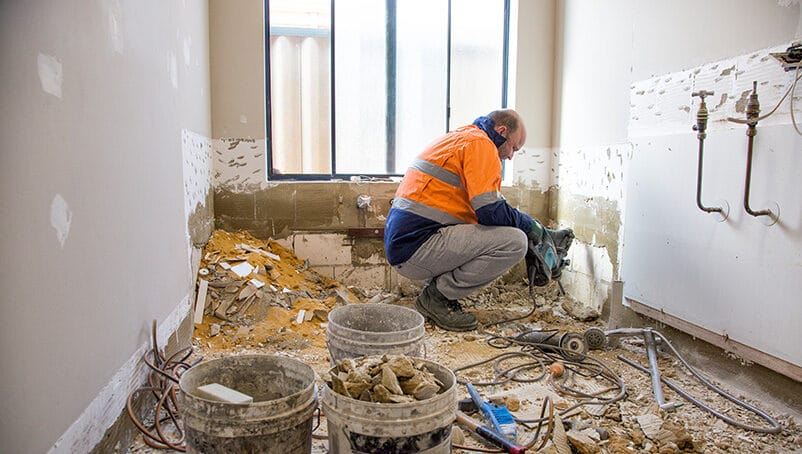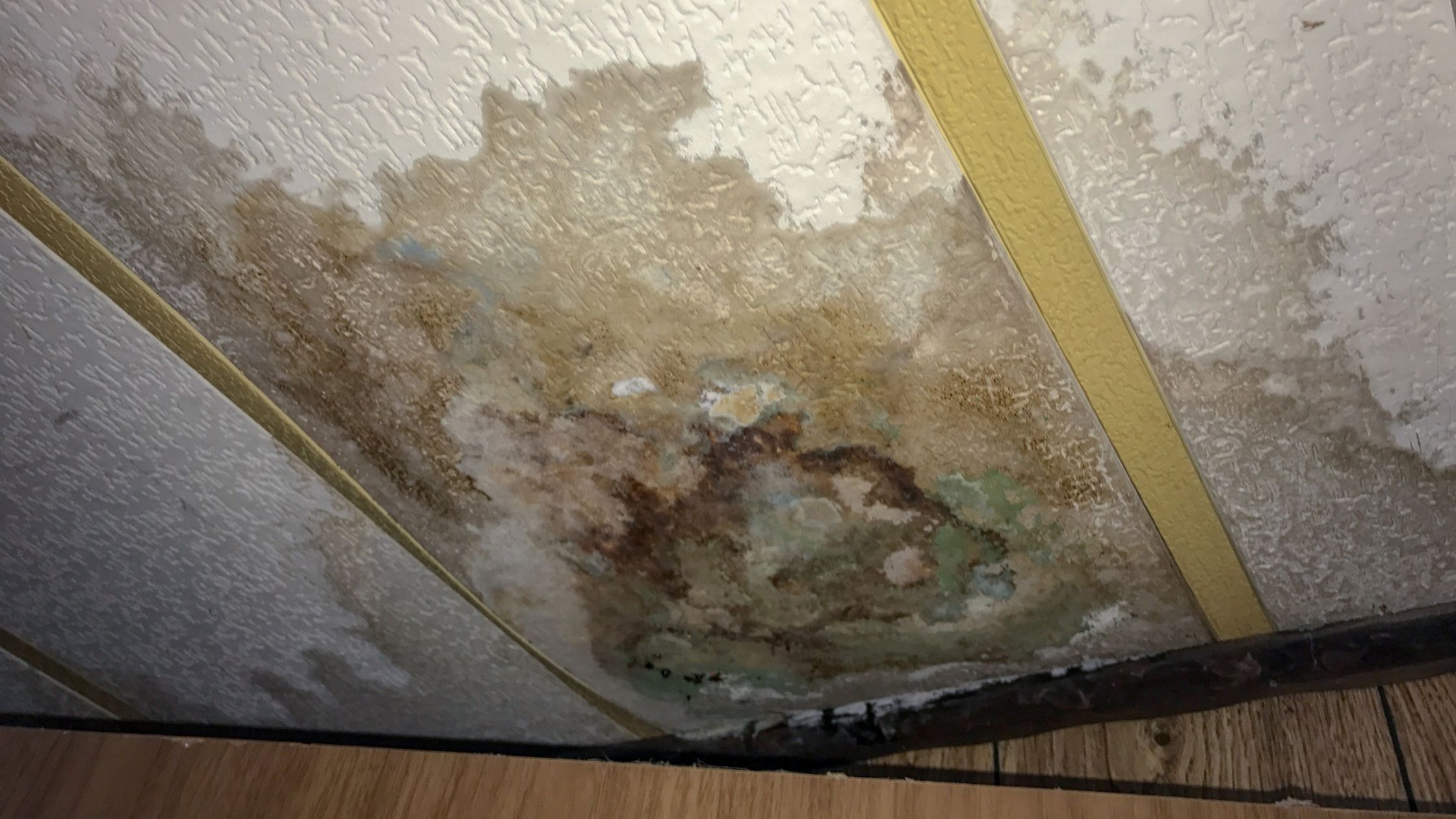The Process of Water Damages Cleanup: Ensuring Your Home Is Restored Properly
Water damage can be a difficult challenge for homeowners, necessitating a structured and thorough clean-up process to restore safety and security and capability. damage restoration services. Following this, efficient water extraction techniques play a pivotal role in minimizing additional harm.
Analyzing the Damage
Upon discovering water damages, the very first step is to extensively examine the extent of the effect. This initial assessment is essential, as it helps identify the essential steps for effective cleaning and reconstruction. Begin by checking the influenced locations, including walls, ceilings, floorings, and personal valuables, to recognize the source of the water intrusion, whether from flooding, leakages, or condensation.
Documenting the damages is important for both insurance policy claims and preparing restoration initiatives - damage restoration services. Usage photographs and composed notes to record the severity of the damages, keeping in mind any afflicted structural components and materials. Pay special focus to areas that might not be instantly visible, such as behind walls and under carpets, as concealed moisture can bring about further issues, consisting of mold growth
Furthermore, analyze the timeline of the water direct exposure. The longer the materials remain damp, the higher the capacity for damages. Recognizing the period of exposure will inform the seriousness of removal efforts. Eventually, an extensive analysis lays the groundwork for a successful water damage cleaning process, making certain that all influenced locations are dealt with efficiently and extensively.
Water Removal Strategies

Specialists normally utilize completely submersible pumps for larger quantities of water, which can promptly relieve flooding in basements or various other influenced locations. For smaller sized quantities, wet/dry vacuum cleaners are commonly used to remove residual dampness from carpets and hard surfaces. In addition, utilizing portable extractors enables for targeted elimination in confined rooms or areas with delicate products.
In circumstances of contaminated water, such as sewage or floodwater, advanced extraction strategies might entail making use of biohazard devices to guarantee safety and conformity with wellness policies. High-powered extraction devices are critical in reducing water retention in architectural materials, which can cause mold growth and architectural degeneration otherwise addressed without delay.
Ultimately, the performance of water removal strategies plays a crucial role in the general success of the water damages cleaning process, preparing for succeeding restoration efforts.
Drying and Dehumidification
When standing water has actually been effectively extracted, the next important phase in the water damages cleaning process is drying and dehumidification. This step is crucial to prevent further damage and mold and mildew development, which can occur within 24 to 2 days in damp environments.
To achieve effective drying, specific devices such as industrial-grade air moving companies and dehumidifiers is employed. Air movers flow air across wet surfaces, enhancing evaporation rates, while dehumidifiers decrease humidity levels in the air, promoting a helpful setting for drying out. The mix of these devices makes certain that moisture is attracted out from home furnishings, floorings, and walls, enabling them to completely dry completely.
It is vital to check the drying out process very closely. Experts usually use moisture meters to assess the wetness web content in numerous materials, guaranteeing that all affected locations reach appropriate dryness degrees. This careful technique helps to avoid surprise wetness pockets that could result in structural damages or harmful mold and mildew growth.

Cleaning and Disinfecting
After the drying out and dehumidification stage is complete, the following crucial step in water damage clean-up is cleaning and sterilizing the influenced areas. This procedure is vital to stop the development of mold, bacteria, and various other pathogens that thrive in moist environments.
The cleaning stage generally involves removing any type of particles, dust, and contaminants from surface areas utilizing specialized cleaning up agents. For tough surface areas, a mix of soap and water or industrial cleansing items is frequently employed. Soft products, such as furniture and carpetings, may call for much more considerable cleansing approaches, including heavy steam cleansing or deep removal methods, to ensure complete hygiene.

Sterilizing complies with cleaning, using EPA-approved anti-bacterials to remove harmful microbes. This action is vital, especially in locations that might have come right into contact with floodwaters or sewage, as these sources can position severe wellness threats.
In addition, it is essential to attend to any kind of staying odors, which may need using smell neutralizers or innovative strategies like ozone treatment. Appropriate cleansing and sanitizing not just bring back the safety and security and health of your home however additionally lay the foundation for effective restoration and repair work in succeeding phases of the water damage cleanup process.
Reconstruction and Fixings

When the assessment is full, repair efforts can start. This typically involves fixing or changing damaged products, ensuring that all job adheres to regional building regulations and standards. As an example, if drywall has been endangered, it will certainly need to be gotten rid of and changed with new product. In addition, floor covering may need comparable focus, depending upon the degree of her latest blog water exposure.
It is important to involve seasoned remediation experts throughout this procedure, as they have the fire damage cleanup know-how to take care of complex repair work efficiently. Additionally, they can aid minimize potential future issues, such as mold development or architectural instability, therefore making sure a secure and habitable living setting. Ultimately, reliable restoration and repair services bring back the home's stability and improve its overall value.
Conclusion
Finally, the procedure of water damages clean-up is crucial for restoring a home to its pre-damage condition. Each stage, from assessing the damages to applying efficient water extraction methods, followed by thorough drying out, sterilizing, and required repair work, plays an essential role in guaranteeing safety and conformity with building requirements. Efficient execution of these actions not only minimizes instant damage yet also boosts the long-lasting integrity and worth of the residential property.
Water damages can be a difficult obstacle for homeowners, demanding a precise and organized cleanup procedure to recover safety and performance. Inevitably, an extensive evaluation lays the foundation for a successful water damage cleaning process, making certain that all affected areas are dealt browse around this site with successfully and completely.
Reliable water extraction techniques are important in alleviating damages and preventing further difficulties following a water breach event.In final thought, the process of water damage clean-up is critical for restoring a home to its pre-damage condition. Each phase, from evaluating the damage to implementing reliable water extraction techniques, followed by comprehensive drying, sterilizing, and needed repair services, plays a crucial duty in making certain safety and security and conformity with structure criteria.